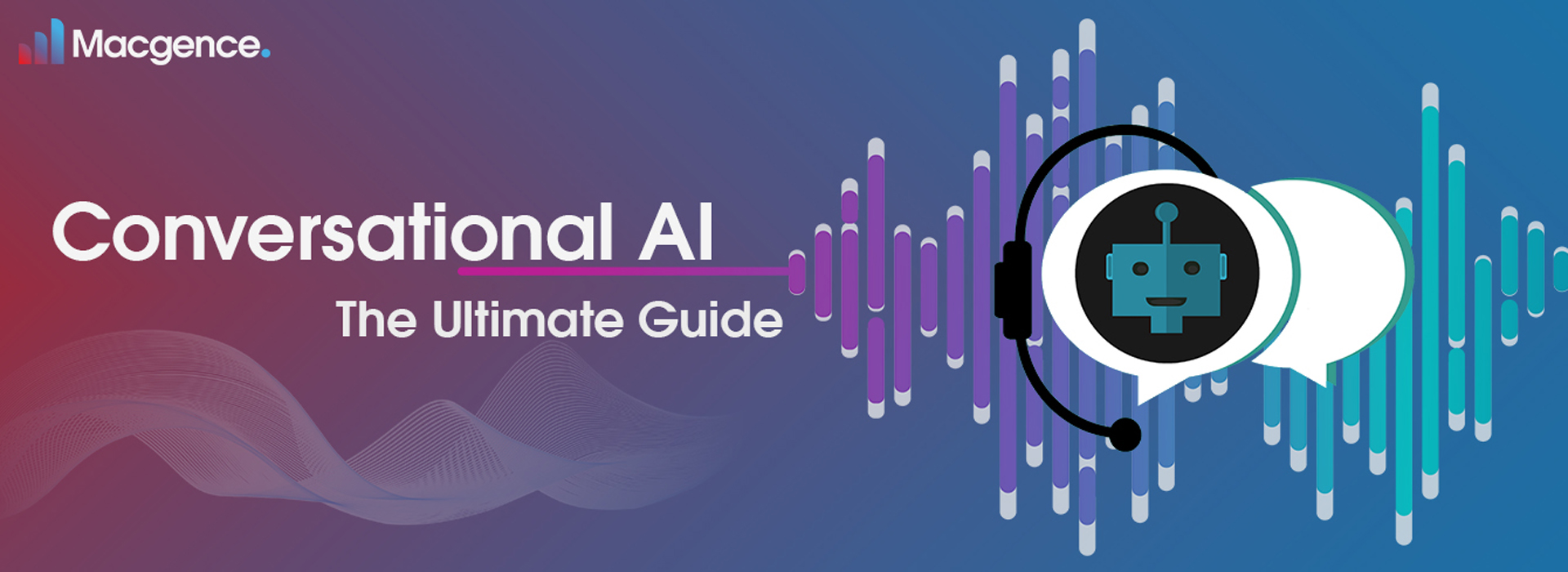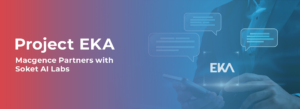Conversational AI: The Ultimate Guide
Have you ever chatted with a robot and felt like you were talking to a real person? That’s because of Conversational AI! It feels like having a helping hand available whenever you need it! Combining natural language processing and machine learning allows conversational AI to understand and respond to user input, delivering personalized and effective interactions. From customer service to product development, conversational AI is used across various industries to enhance user experiences and satisfaction. So, let’s dive into how it works, its applications, benefits, and challenges, and see how different brands use conversational AI to provide enhanced user experiences, convenience and support.
What is Conversational AI?
Conversational AI, often called chatbots and Virtual Assistants, has revolutionized communication by enabling users to engage with digital systems through natural conversations. It eliminates the need for traditional text input as users can now interact by speaking, offering a more interactive and user-friendly experience. This technology has found its way into our lives, from self-driving cars to intelligent email responses and even predicting arrival times through GPS apps. By leveraging it, users can conversationally communicate with digital systems, making interactions more intuitive and seamless.
How does Conversational AI work?

It is a cutting-edge technology that blends interactive technologies with Natural Language Processing (NLP) and machine learning (ML) techniques to provide human-like interaction. The systems deliver personalized and effective interactions beyond by understanding human language through NLP and leveraging ML to learn and enhance reactions.
Here’s a breakdown of the steps involved in the process:
- User input: Users input their questions or requests into the conversational AI system by typing, speaking, or combining both.
- Natural language processing: When users input their queries or requests, the NLP component of conversational AI analyzes their input, breaking it down into sentences, phrases, and words. Doing this lets it understand the user’s intent or purpose behind the query.
- Machine learning: Powered by ML, the system utilizes the data processed by NLP to generate a response tailored to the user’s specific needs. The ML component improves accuracy and performance through continuous learning from each interaction.
- Response generation: Finally, the ML component generates the response, which can be in text, speech, or a combination of both. The user receives the response, completing the conversational loop.
It enables systems to engage in dynamic and intuitive conversations with users, enhancing user experience and providing efficient solutions to their queries or requests.
Applications of Conversational AI
Conversational AI is revolutionizing our interaction with technology, with its impact being felt across various industries such as healthcare, finance, and retail, enhancing the customer experience in a personalized and engaging manner.
Let’s explore some key domains where this is reshaping the landscape:
- Customer service: By leveraging it, businesses can provide round-the-clock customer support, promptly addressing inquiries and resolving issues. For instance, if you have a query about your order, a conversational AI agent can assist you, ensuring efficient problem-solving.
- Sales and marketing: It is vital in lead generation, prospect qualification, and sales conversion. Imagine you’re in the market for a new car – engaging with a conversational AI agent allows you to discuss your preferences and requirements, enabling the agent to suggest the most suitable options tailored to your needs.
- Product development: It facilitates user feedback collection, issue identification, and feature testing for product improvement. Suppose you use a newly developed software application and encounter questions or problems. Engaging with a conversational AI agent allows you to receive immediate support while enabling the agent to gather your valuable feedback, ensuring a seamless communication channel with the development team.
Benefits of Conversational AI
It brings numerous advantages across industries and applications. Some of the significant benefits include:
- Reduced costs: It can help businesses reduce costs by allowing human agents to focus on more complex issues. For example, a chatbot can efficiently handle customer service inquiries like product details or order updates. By offloading these simple tasks to chatbots, human agents can dedicate their time to tackling more intricate issues, such as resolving complaints or offering technical assistance. Using chatbots also extends to automating tasks like appointment scheduling and sending reminders. This automation enhances productivity and results in substantial savings in labour expenses.
- Language and Multilingual Support: It systems can comprehend and reply in various Languages, allowing companies to interact with a worldwide clientele. They facilitate communication and bridge language barriers, improving accessibility for users worldwide.
- Improved customer service: It can help businesses improve customer service by providing 24/7 support, personalized recommendations, and more efficient resolution of issues. It systems can understand and respond in many languages, enabling businesses to communicate with customers worldwide.
Challenges of Conversational AI

While conversational AI is a rapidly developing field, plenty of challenges remain. The following are some of the main issues that conversational AI is facing:
- Contextual Understanding: It is challenging for conversational AI systems because natural language is often ambiguous and can be interpreted differently. With this, the system can discern the intended meaning based on the context of the conversation. This ability to detect context enhances the accuracy and relevance of the system’s responses.
- Privacy and security concerns: As this systems become more prevalent, ensuring privacy and security is paramount. These AI Systems collect user data, including personal information, chat histories, and browsing activities. It is crucial to safeguard this data from unauthorized access from the system and potential hackers. Implementing robust security measures is necessary to protect user privacy.
- User acceptance: These systems need to be accepted by users to be successful. This can be difficult because chatbots are a relatively new feature, so people may be reluctant to engage with a system they view as artificial or robotic.
Examples
Let’s explore how different brands are using chatbots and virtual assistants to leverage conversational AI:
- Duolingo: This educational app incorporates conversational AI to create an engaging language-learning experience. Users can interact with the app, making acquiring new language skills more enjoyable.
- Dom by Domino’s: Meet Dom, Domino’s friendly chatbot! Dom assists customers by facilitating pizza orders, providing information about Domino’s offerings, and resolving any concerns or inquiries they may have. With Dom’s help, the pizza ordering process becomes hassle-free.
- Kotak Kaya: If you have Kotak Life Insurance, meet Kaya, your virtual assistant. Kaya is available round the clock to assist you with your insurance-related queries. Whether it’s information about products and services, filing claims, or seeking customer support, Kaya has covered you.
These examples demonstrate how conversational AI-powered chatbots and virtual assistants enhance user experiences, offer convenience, and provide support in various industries.
Conclusion
In conclusion, Conversational AI is revolutionizing how we interact with technology, making it more natural and intuitive. From language learning apps to pizza delivery services, it’s transforming our digital experiences. So, next time you chat with a bot, remember it’s not just a robot—it’s conversational AI at work!
How can Macgence help?
At Macgence, your business can benefit from our assistance in implementing conversational AI. We provide high-quality training data and fully managed AI/ML data solutions to enhance the accuracy of your conversational AI models. With our expertise, you can achieve improved customer experiences and increased operational efficiency. Not only that, we offer human-generated content to ensure the highest quality and reliability of your conversational AI models.
Frequently Asked Questions (FAQ)
Q1. What are examples of conversational AI?
Chatbots and virtual assistants like Siri and Alexa.
Q.2 What is the difference between a chatbot and conversational AI?
While chatbots can handle basic automated conversations, conversational AI on the other hand is an advanced system. It makes human-like conversations possible with the use of artificial intelligence.
Q3. Who uses conversational AI?
Conversational AI is used by many industries and businesses, including customer service, healthcare and banking.
You Might Like
February 28, 2025
Project EKA – Driving the Future of AI in India
Spread the loveArtificial Intelligence (AI) has long been heralded as the driving force behind global technological revolutions. But what happens when AI isn’t tailored to the needs of its diverse users? Project EKA is answering that question in India. This groundbreaking initiative aims to redefine the AI landscape, bridging the gap between India’s cultural, linguistic, […]
March 7, 2025
What is Data Annotation? And How Can It Help Build Better AI?
Spread the loveIntroduction In the world of digitalised artificial intelligence (AI) and machine learning (ML), data is the core base of innovation. However, raw data alone is not sufficient to train accurate AI models. That’s why data annotation comes forward to resolve this. It is a fundamental process that helps machines to understand and interpret […]
March 6, 2025
Vertical AI Agents: Redefining Business Efficiency and Innovation
Spread the loveThe pace of industry activity is being altered by the evolution of AI technology. Its most recent advancement represents yet another level in Vertical AI systems. This is a cross discipline form of AI strategy that aims to improve automation in decision making and task optimization by heuristically solving all encompassing problems within […]
March 5, 2025
Use of Insurance Data Annotation Services for AI/ML Models
Spread the loveThe integration of artificial intelligence (AI) and machine learning (ML) is rapidly transforming the insurance industry. In order to build reliable AI/ML models, however, thorough data annotation is necessary. Insurance data annotation is a key step in enabling automated systems to read complex insurance documents, identify fraud, and optimize claim processing. If you […]


 Previous Blog
Previous Blog







